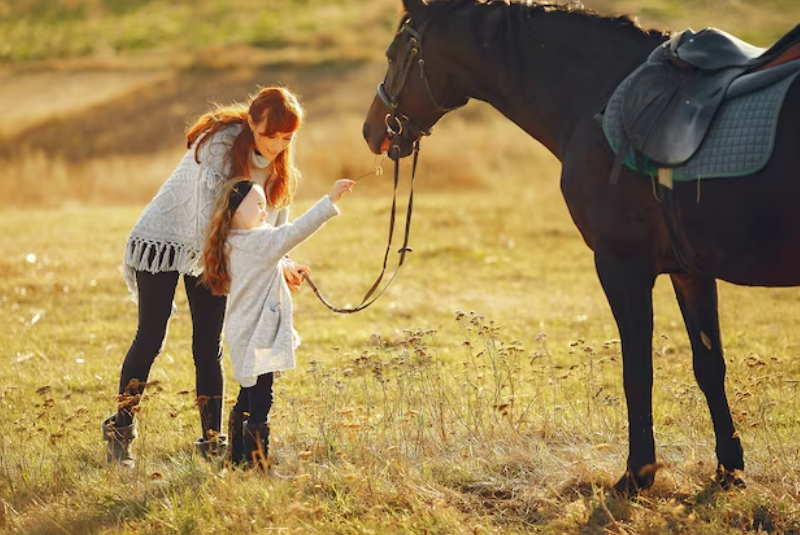Horses are incredibly perceptive creatures, often communicating their discomfort or distress through subtle yet important body language cues. As someone who interacts with horses, it’s essential to be attuned to these signals to ensure both the horse’s well-being and the safety of those involved. In this guide, I’ll walk you through the signs of discomfort in horses, how to address them, and how to build trust to enhance your relationship.
Contents
Recognizing the Signs of Discomfort
Horses are prey animals and are naturally sensitive to their surroundings and the intentions of those around them. They may not immediately show overt signs of discomfort, especially if they’ve been trained to tolerate human interaction. However, careful observation can reveal subtle clues that a horse is feeling uneasy. https://hearttohorses.com/
Key Behavioral Cues:
- Tension in the Body: A tense posture, such as stiff muscles or a tight back, can indicate stress. This often accompanies other signs, like agitation or nervousness.
- Avoidance: If a horse turns away or attempts to move out of reach, it may be trying to avoid interaction because it’s uncomfortable.
- Facial Expressions: Wide eyes, flared nostrils, and a tight mouth typically signal anxiety or fear.
- Vocalizations: While horses are generally not as vocal as some other animals, unusual noises—like whinnies, snorts, or snorts—can suggest distress.
- Change in Vital Signs: A sudden increase in heart rate or rapid respiration may indicate physical or emotional stress.
- Ear Positioning: Ears pinned back against the head typically show irritation, discomfort, or aggression.
These cues should always be considered in context. If multiple signs appear together, it’s likely that the horse is uncomfortable and may require attention or a change in the handling approach.
Building Trust and Alleviating Discomfort
Once you’ve identified signs of discomfort, your goal should be to help the horse feel more secure and comfortable. This involves being mindful of the horse’s personal space and employing strategies that encourage trust and calmness.
Strategies to Build a Better Relationship:
- Consistent Handling: Regular, gentle handling helps a horse become accustomed to your presence, reducing anxiety over time.
- Positive Reinforcement: Rewarding calm behavior or desired actions with treats or praise helps reinforce a positive association with you.
- Non-threatening Posture: Approach horses with a relaxed and calm demeanor. Avoid sudden movements or dominant body language, which can make the horse feel threatened.
- Gentle Grooming and Touch: Grooming is not only a bonding activity but can also be soothing for the horse when done carefully. Patience is key during this process, as it helps build trust.
Safety First: Always Prioritize Safety
When interacting with horses, safety should be a top priority. Even if a horse appears calm, it’s important to stay alert to its body language and environment. Always approach a horse from the side and avoid walking directly behind it, as this can startle the animal. Be aware of the horse’s personal space, and never push or rush a horse into an interaction if it seems uncomfortable.
In moments of discomfort, the horse may react unpredictably—either by fleeing, rearing, or in some cases, becoming aggressive. Always have an escape plan and stay at a safe distance if the horse shows signs of heightened anxiety.
Seeking Professional Insight
If you’re unsure of how to interpret a horse’s behavior or if persistent discomfort continues despite your efforts, it’s always wise to seek guidance from professionals. Equine trainers, veterinarians, or behaviorists can provide valuable insights into a horse’s body language and help you develop better communication strategies. Sometimes, a horse’s discomfort may stem from underlying health issues, and a veterinarian’s assessment can help rule out physical causes.
Conclusion: Building a Compassionate Relationship
Recognizing the signs of discomfort in horses is an essential skill for anyone working with these magnificent creatures. By learning to read their body language and responding with empathy and patience, you can create a bond based on trust and respect. Each horse is an individual, and as you develop a deeper understanding of their language, you’ll foster a safer and more rewarding relationship.
Remember, patience is key. With each interaction, you’ll learn more about the horse’s unique signals, helping to alleviate discomfort and create a harmonious relationship built on mutual understanding. Always prioritize safety and consider professional advice when needed to ensure the best possible experience for both you and the horse.

